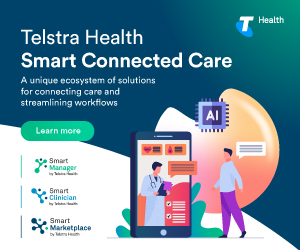6 tips to manage clinical risk and curb compensation claims
Recent research shows compensation claims for GPs has increased over the past few years, so what can doctors do to understand and mitigate medico-legal risk? We take a look at six key clinical risk management action points that can help GPs reduce compensation claims.
Compensation claims on the rise, how can we mitigate risk?
A complex working environment, greater regulatory scrutiny and higher expectations, means the pressure is on medical professionals to be even more vigilant about mitigating medico-legal risk, research from medical insurers, recent research from Avant has revealed.
Avant’s research shows the average rate of compensation claims for Avant general practitioner (GPs) members rose around 20% over the past three years, compared to the previous three years. The Avant research team investigated the nature of these claims, to help members better understand and mitigate their medico-legal risks.
Overall, the results of the analysis point to the following key actions GPs can take to help reduce the chances of a substantiated compensation claim:
1. Remember the value of physical examinations
According to the research, inadequate physical examination is a key factor or contributing factor in 16% of diagnosis-related claims – and the majority of these (70%) were substantiated.
The research highlights the need for GPs to remember the value and important of physical examinations, especially in the age of medical testing technologies. Interestingly, this finding is also in line with the Royal Australian College of General Practitioners (RACGP) position statement, which urges GPs not to “contribute to the problem of too much medicine through the over-reliance on medical technologies in place of history-taking and physical examination”.
2. Avoid common errors that lead to misdiagnosis
The research found misdiagnosis was a much less common issue (13% of diagnosis claims) than failed diagnosis or delayed diagnosis. However, claims involving misdiagnosis were more likely to be substantiated (73% of these claims). The Avant research explains the likelihood of this, in part, because it is usually easier to prove harm in cases of misdiagnosis.
Meanwhile, the report also showed that around four in 10 claims against GPs were unsubstantiated. Again, diagnosis was the most common underlying issue. And while it may never be possible to entirely avoid claims being initiated against doctors who have acted appropriately, the research points to a range of strategies that can help to prevent the misunderstandings and emotions that can lead a patient to make such a claim.
Given the widespread nature of diagnostic error, the report encourages GPs to leverage some the latest resources available on how to avoid misdiagnosis.
Some helpful resources include:
- Diagnostic Error: Learning Resource for Clinicians: Published by the NSW Government’s Clinical Excellence Commission, this guide helps translate knowledge into action by challenging doctors to pick five things from a list of actions to improve diagnostic quality in their practice
- The Avant webinar for practical advice on diagnostic errors: From international expert, Dr Mark Graber, which can be viewed by members for CPD points.
- Improving Diagnosis in Healthcare: US publication finding that diagnosis–and, in particular, the occurrence of diagnostic errors–has been largely unappreciated in efforts to improve the quality and safety of health care.
- RACGP feature on reducing diagnostic error: Quick and easy to read feature on understanding and preventing diagnostic error
3. Follow up diagnostic investigations
While the research found the most common stage of care leading to diagnosis related-claims was the initial assessment, claims that centred on the follow up of diagnostic investigations also accounted for around a quarter of diagnosis claims and were more likely to be substantiated (65% of these claims).
Follow-up related claims included circumstances where there was a failure to:
- Take further diagnostic action after receiving the results of initial tests, investigations or referrals
- Follow up a patient or referral, or a failure to follow up the results of tests/ investigations
For further information on follow-up, the Avant article about tracking tests contains valuable information into how to manage patients who have been referred for investigative tests. In particular, the article highlights the importance of computer-based solutions that can enable effective central tracking of test results.
It suggests GPs can take risk mitigation measures by using the right electronic clinical and patient management solutions, which include:
- Ordering tests electronically, automatically log them on the system.
- Doctors in the practice can action/check off results upon receipt.
- The treating medical practitioner can record action taken and then choose to leave the recall facility open or closed.
- When the treating medical practitioner is away, another doctor can be nominated to check results
- Make it easy to nominate a practitioner, or member of the practice staff, to print off any outstanding test audit trail reports each week for each medical practitioner. This allows you to identify tests ordered where no results have been received. The practitioner can then which patients require follow-up.
- Become familiar with the use of the electronic patient records as this will facilitate ease of test tracking, referral tracking and recalls.
4. Appropriately handle adverse events
According to Avant’s research, claims related to a surgical procedure or medication were more likely to be substantiated. Unlike diagnosis-related claims, case involving surgical procedure or medications generally point to a likelihood that a doctor would have been aware of an adverse event when or close to when it occurred.
In these circumstances, Avant suggests leveraging a doctor’s specialised knowledge in how to handle adverse events, can help to prevent a claim.
For any type of adverse event, the Medical Board of Australia’s (MBA) Good Medical Practice: A code of conduct for doctors in Australia, states that “you have a responsibility to be open and honest in your communication with your patient, to review what has occurred and to report appropriately. When something goes wrong you should seek advice from your colleagues and from your medical indemnity insurer”.
The MBA also provide a handy list of appropriate risk management actions including:
- Being aware of the importance of the principles of open disclosure and a non-punitive approach to incident management.
- Participating in systems of quality assurance and improvement.
- Participating in systems for surveillance and monitoring of adverse events and ‘near misses’, including reporting such events.
- If you have management responsibilities, making sure that systems are in place for raising concerns about risks to patients.
- Working in your practice and within systems to reduce error and improve patient safety, and supporting colleagues who raise concerns about patient safety.
- Taking all reasonable steps to address the issue if you have reason to think that patient safety may be compromised.
The MBA further highlights the importance of protecting the welfare of patients, who may be put at risk if a doctor is performing poorly. It suggests that in the event you consider there is a risk, good medical practice involves:
- Complying with any statutory reporting requirements, including the mandatory reporting requirements under the National Law as it applies in your jurisdiction.10
- Recognising and taking steps to minimise the risks of fatigue, including complying with relevant state and territory occupational health and safety legislation.
- If you know or suspect that you have a health condition that could adversely affect your judgement or performance, following the guidance in Section 9.2 Your health.
- Taking steps to protect patients from risk posed by a colleague’s conduct, practice or ill health.
- Taking appropriate steps to assist your colleague to receive help if you have concerns about a colleague’s performance or fitness to practise.
- If you are not sure what to do, seeking advice from an experienced colleague, your employer, doctors’ health advisory services, professional indemnity insurers, the Medical Board of Australia or a professional organisation.
The Australian Commission on Safety and Quality in Health Care, also offers a range of helpful guidelines on handling adverse events, including their handy factsheet on the Open Disclosure framework for healthcare.
5. Keep good patient records
The research clearly points to good patient record management as being not only essential for patient care, but a key component in the defence of a claim or complaint.
To find out more about good record keeping, the following resources and solutions can help:
- Avant medical record-keeping factsheet
- MedicalDirector’s suite of electronic health record, clinical and practice management solutions
- RACGP improving health record quality guidelines
- Government administrative record keeping guidelines for health professionals
6. Enhance patient communication and involvement
Patient-centric care, enhanced patient engagement and communication surfaced in the research as critical in minimising risk and optimising health outcomes. The research indicated patients who feel they have a poor relationship with their doctor, or have issues with their doctor’s manner or communication style, were more likely to make a formal complaint or claim. The report refers GPs to a helpful factsheet that outlines a range of verbal and non-verbal communication techniques including:
- Body language and expression, including eye contact, a warm demeanour and pleasant greeting
- Responsiveness, empathy, trust and respect
- Listening attentively
- Offering feedback without judgement
Meanwhile, the research also reveals the benefits of shared decision-making between a doctor and their patients, include:
- The incorporation of evidence and patient preferences into a consultation
- Improving patient knowledge and understanding of risks
- Enhancing patient-doctor communication
- Reducing any decisional conflict and patient feelings of being uninformed
- Reducing the use of inappropriate tests and treatments.
Interestingly, the research stresses how shared decision-making in diagnosis needs to be a collaborative, iterative deliberation between patients, their family and their doctors and managing patient expectations so they understand the limitations of testing and can make informed decisions with this knowledge. For more guidance on shared decision-making, Choosing Wisely also offers some helpful resources.
MedicalDirector’s Chief Clinical Advisor and GP, Dr Charlotte Middleton, says busy practitioners don’t need to make drastic overhauls in communication, even small, habitual changes can make a big difference.
“The best thing any General Practitioner can do is to really listen to the patient, take the patient seriously, and be willing to explain clearly to the patient what is going on,” she says. “At the same time, be open and honest when you really don’t know. And if the matter is too complex for a six-minute consult, you could ask the patient to please make a longer appointment to see you again. This brings far better health outcomes and improves continuity of care than rushing the patient out the door.”
There are a number of helpful tips, advice, resources and guides currently available for healthcare professionals interested in boosting communication including:
- Healthshare Factsheets: Enhance patient understanding and drive better, more personalised clinical outcomes by providing patients with condition and product fact sheets from leading healthcare organisations with Healthshare Fact Sheets, available via the MedicalDirector Sidebar.
- RACGP Courses and Workshops: Understand complaint handling, particularly communication matters and develop methods to ensure effective patient-doctor communication and minimise potential patient dissatisfaction.
- RACGP Resources on Communication: An insightful resource outlining the benefits of good communication to both patient satisfaction and personal well-being and better peace of mind for physicians.









